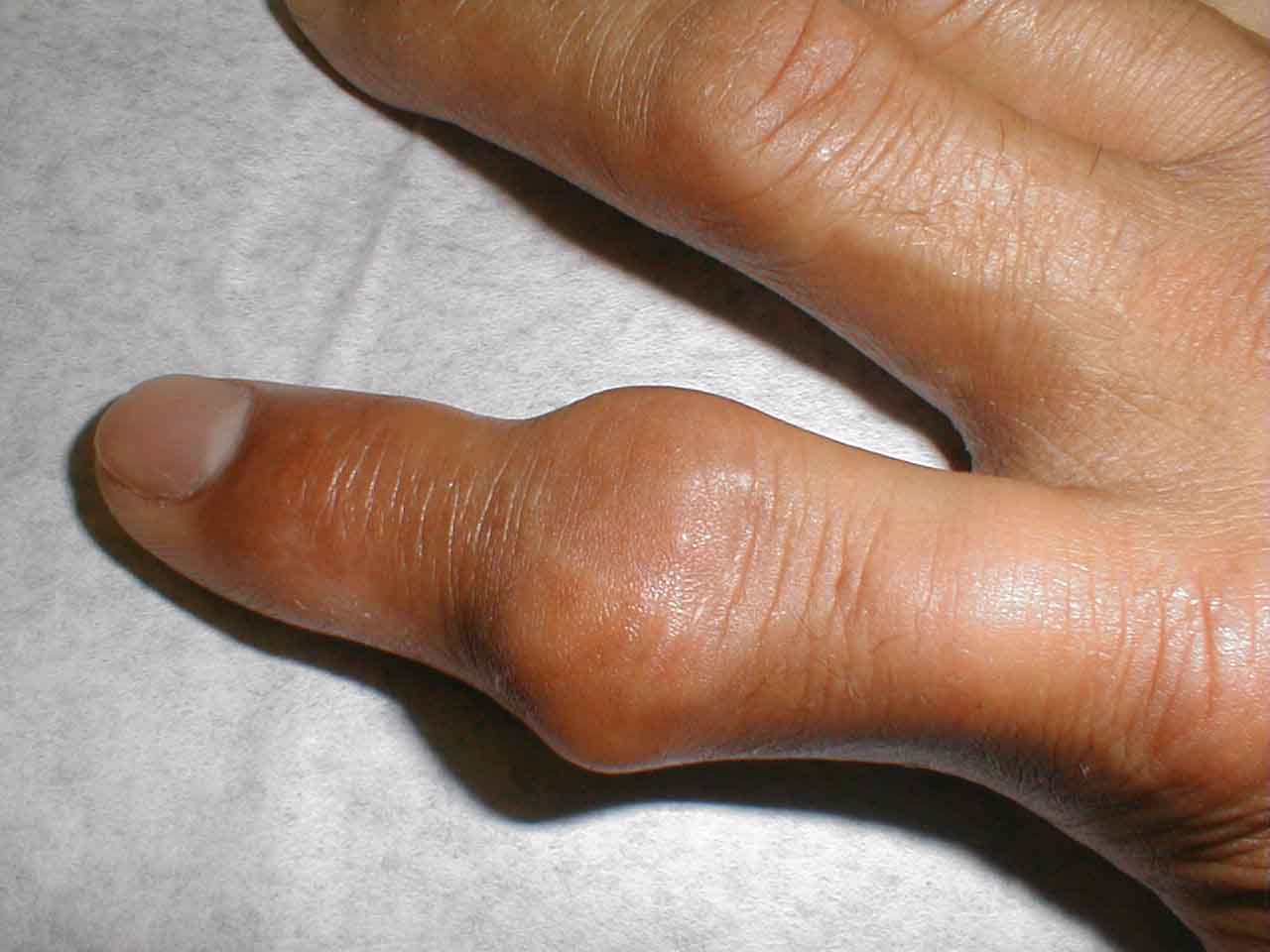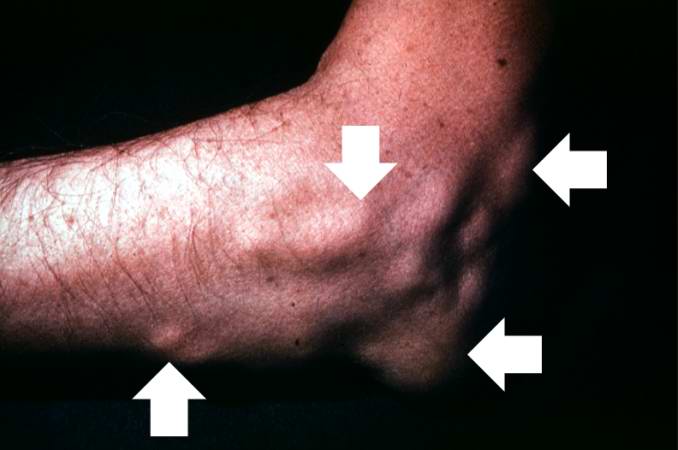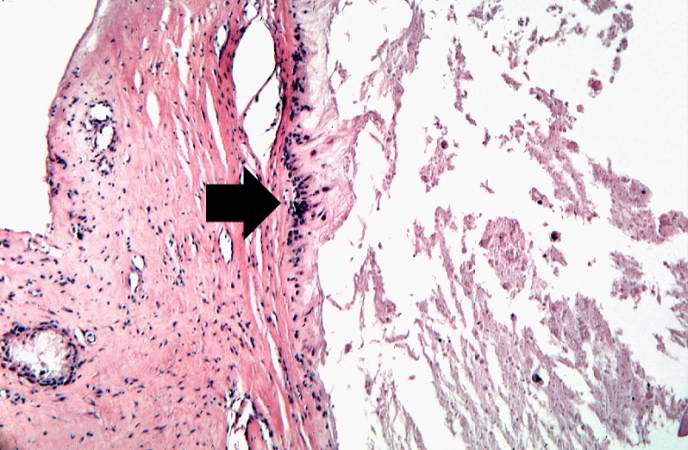Gout
| Gout | |
 | |
|---|---|
| Tophaceous Gout (Image courtesy of Charlie Goldberg, M.D.) | |
| ICD-10 | M10 |
| ICD-9 | 274.0 274.1 274.8 274.9 |
| OMIM | 138900 300323 |
| DiseasesDB | 29031 |
| MeSH | D006073 |
For patient information click here
|
Gout Microchapters |
|
Diagnosis |
|---|
|
Treatment |
|
Case Studies |
|
Gout On the Web |
|
American Roentgen Ray Society Images of Gout |
Editor-In-Chief: C. Michael Gibson, M.S., M.D. [1] Associate Editor-In-Chief: Cafer Zorkun, M.D., Ph.D. [2]
Overview
Historical Perspective
Pathophysiology
== Causes
Differentiating Gout from other Diseases
[[Epidemiology and Demographics
Risk Factors
Screening
Natural History, Complications and Prognosis
Diagnosis
History and Symptoms | Physical Examination | Laboratory Findings | X-ray | MRI
Treatment
Medical Therapy | Surgery | Secondary Prevention
Case Examples
Case #1
Clinical Summary
This patient was diagnosed with gout approximately 20 years ago. At that time, he noted the gradual onset of pain in the left knee, followed by swelling, redness and heat, all of which persisted for approximately one month. Shortly thereafter, he had periodic episodes of hot, painful, swollen joints involving the left knee, left ankle, and both first metatarsophalangeal joints. At this time the patient was hospitalized for evaluation of these arthritides. Serum uric acid values on three separate occasions were 8.0, 9.3, and 8.7 mg/dl. In addition to the presence of the painful swollen joints, a gouty tophus was present on the left arm. The patient was readmitted to the hospital from time to time because of acute exacerbations of gouty arthritis. On the most recent hospital admission, a 3-cm tophus was found over the right elbow, as well as several smaller tophi over the right hand.
Autopsy Findings
The specimen consisted of an elliptically shaped, mottled, yellow-white irregular hard mass, measuring 8.0 x 5.0 x 2.0 cm. in diameter.
Histopathological Findings








Related Chapters
- Pseudogout is a very similar disease, but caused by deposition of calcium pyrophosphate, not uric acid.
External links
- "American College of Rheumatology". March 23, 2007. Retrieved 2007-03-23. Text " American College of Rheumatology " ignored (help)- (ACR Fact Sheet on Gout)
- "Answers and Questions on Gout". U.S. National Institutes of Health—National Institute of Arthritis and Musculoskeletal and Skin Diseases. September 28th, 2007. Retrieved 2007-08-28. Check date values in:
|date=(help) - "Diet and gout". A-Z Health Guide. webMD.com. July 01, 2004. Retrieved 2006-09-18. Check date values in:
|date=(help) - "Coffee Consumption and Reduced Gout Risk". Drinking coffee reduces risk of gout in middle age men. U.S. National Institutes of Health. Retrieved 2007-05-25.
- "Purine content in food". British Dalmatian Club. Retrieved 2006-09-18.
- Gout in Depth - How Stuff Works
Template:Diseases of the musculoskeletal system and connective tissue
ar:نقرس bg:Подагра cs:Dna da:Gigt de:Gicht eo:Podagro fa:نقرس io:Kiragro id:Gout it:Gotta he:שיגדון lb:Giicht ms:Gout nl:Jicht no:Urinsyregikt sk:Dna sr:Гихт fi:Kihti sv:Gikt te:గౌటు